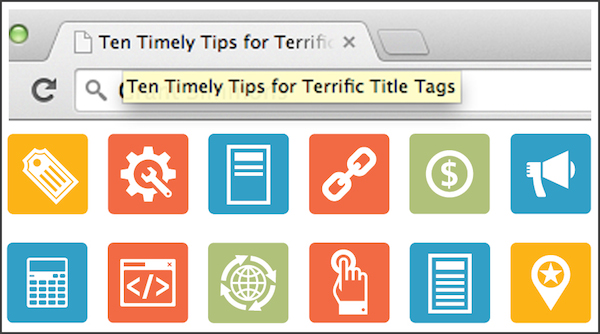
 Google’s most recent results page layout changes meant more than just a search experience update. With the change came adjustments to how each individual result is displayed, which may almost certainly necessitate a refresh for a core search engine optimization (SEO) element: the venerable title tag.
Google’s most recent results page layout changes meant more than just a search experience update. With the change came adjustments to how each individual result is displayed, which may almost certainly necessitate a refresh for a core search engine optimization (SEO) element: the venerable title tag.
So first off, for both the old and new hat SEO folks, what is the title tag and why is it important?
As Google explains:
A title tag tells both users and search engines what the topic of a particular page is. … If your document appears in a search results page, the contents of the title tag will usually appear in the first line of the results … This can help users recognize if the page is likely to be relevant to their search.
As Kristine Schachinger wrote on SEW:
Title tags are part of the meta tags that appear at the top of your HTML inside the < head> area. Think of title tags like the title of the chapter of a book. It tells people and search engines what your page is about. … A title tag is THE MOST IMPORTANT SINGLE TAG in your page. It tells the search engines what your page is about. It is still vitally important to your SEO strategy.
Much may have changed in Google over the years, but the importance of the title tag can’t be overstressed. It’s used (most of the time) as the clickable text in a search result, it is the headline to your ad, the start of a (search) conversion funnel, and a facet of internal linking.
Your website’s title tag says who you are, what you do, why anyone should bother to click, and why Google should care. It is your opening line when you first meet someone, or a welcoming greeting on your return. It is important. (Did I make that clear?)
Google’s Distinguished Engineer Matt Cutts likes titles, too:

Tip 1: The Long
 Much has been debated over the maximum length of a title tag. Review the mean recommendations of 10 different online resources and the average is around the 65-70 character mark.
Much has been debated over the maximum length of a title tag. Review the mean recommendations of 10 different online resources and the average is around the 65-70 character mark.
However, this study proved that character count is a somewhat spurious measure, and that the sum of character’s width should be the primary driver of optimal title SERP display.
Fast forward to Google’s most recent redesign and you’ll see less is apparently more, with the title displayed appearing to be 10-15 percent shorter.
Though some (or many) folk will disagree, I’m not as concerned with the maximum display limiter of the new display of the title tag enough to spout change for change’s sake, so with the caveats I mention below (See Tip 3) don’t worry too much about adapting title tag length to this latest update.
(Tip 1.5: Cutts also mentions in the video embedded above that Google may use all of a title tag to understand a page, so it’s best to make sure you cover the main topic(s) in the title tag, even if it is a little long for SERP display.)
Tip 2: The Short
 So if there’s a maximum length, is there a minimum number of characters or character width? Although there’s always discussion on title maximum, the minimum length of the title tag is a challenge of a couple of factors:
So if there’s a maximum length, is there a minimum number of characters or character width? Although there’s always discussion on title maximum, the minimum length of the title tag is a challenge of a couple of factors:
- Why waste the valuable real estate with a short title tag and opportunity to inspire a click?
- Google may decide to ‘fill in the blanks’ and add additional characters to the title tag from on-page content = you lose some control over what shows.
So from these two factors I’d recommend you follow the maximum characters / width for the minimum, ensuring you’re meeting those criteria will make the shortness of titles a moot point!
FYI: This is probably too short of a title tag:

Tip 3: The Start
 There’s nothing worse than missing an opportunity. The key in the search results is to start out strong, lead with your best foot, and connect with the search query to inspire the click.
There’s nothing worse than missing an opportunity. The key in the search results is to start out strong, lead with your best foot, and connect with the search query to inspire the click.
This doesn’t mean you must start with your primary keyword for the specific page (or your homepage) titles, but consider doing some informal testing with a few friends or colleagues to see what mix inspires the click more than others.
A review of the SERP can also help from a standpoint of not following the herd (see “stand out” below), and differentiating the first 25 or so characters to really stand out from the crowd.
If everyone around you is calling out their brand first, then maybe you should be more conversational, such as:
More than 5,000 air filters in stock! Check out Fred’s Auto online.
Remember… title tags are an art and a science. Write accordingly. Be creative!
Tip 4: The Big Bold Bit
 It’s not just bravado. Nothing draws the eye more than contrast.
It’s not just bravado. Nothing draws the eye more than contrast.
Until Google adds additional color to the search results (I think it’ll be with us in the next 12 months, probably starting as a ‘color extension’ for paid ads), it’s a bold result that pulls us in as:
- Psychologically, we see it as more important.
- Subconsciously, our eyes are directed to differences.
- Emotionally, we feel more confident in decisions that appear with signals of strength (our search queries are – roughly – matched in the bolding of results).
Anticipating user’s search queries and ensuring they’re included in your title tags (and meta description snippets), will potentially give you one or a few bolded words in your search display, driving greater visibility, differentiation, and hopefully driving a higher click-through rate as results appear to better match the user’s intent.
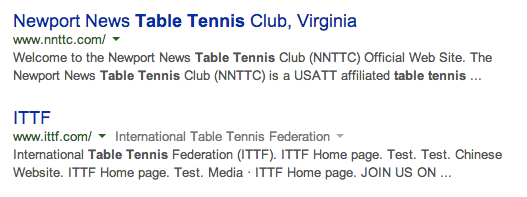
Tip 5: The Switch Hitter
 Do a search for [homes for sale] and you’ll see results with title tags that don’t include an exact query match. Why?
Do a search for [homes for sale] and you’ll see results with title tags that don’t include an exact query match. Why?
Google guesses, sometimes well, what you may be looking for based on a massive data set of prior queries, user interactions and semantically related themes that encapsulate certain queries.
The Hummingbird update helps Google interpret both the search query and the match with your on-page content.
Understanding the meaning of a search query opens up the possibility of many more search queries matching your page and opens up many more possibilities in the SERP for bolding and highlighting of results. (When you searched for “homes for sale”, did you get “houses for sale” and “real estate” match via bold in the SERP?).
Leveraging thematic rather than exact match keyword rich title tags can help capture more than just the query you thought.
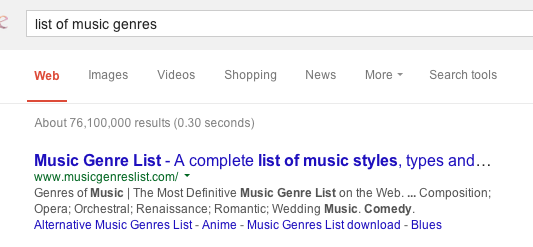
Tip 6: The Big Click
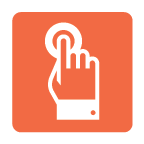 A title tag, when used as the clickable part of a search result, should not only be clickable, it should inspire clicks through some kind of call to action.
A title tag, when used as the clickable part of a search result, should not only be clickable, it should inspire clicks through some kind of call to action.
I noted bolding as a facet of Google’s attempt to connect user queries with clicks, but there’s way more to clickability that just formatting. I’m one of the many who calls headline writing a true art, because the element of inspiring clicks is about providing clear, concise and connective reasons for user clicks.
Most simple is a ‘click here’, but it’s hardly inspirational, and in a world of SERPs where differentiation is key, building a subtle call to action into your result can be key to gaining more clicks.
I’ll add a big caveat here. I tend to push most obvious calls to action into the meta description tag where there’s more opportunity (and more characters / visible space) to build a story, however short that story may be. But there’s still some instances where the addition of an active verb, distinct command or user mandate, can fit snugly into a title tag.
Searches such as [Find a Tennis Partner] can give some idea of what to expect, and connect with a new to town chap like myself for a few sets.

Tip 7: The Stand Out
 You may not be top of page, but that doesn’t mean you can’t be top of mind! Don’t underestimate the ability of a title tag to help you stand out from the crowd.
You may not be top of page, but that doesn’t mean you can’t be top of mind! Don’t underestimate the ability of a title tag to help you stand out from the crowd.
As both major engines have alluded to, SERP click-through rates provide a valuable (initial) signal of relevance and user engagement, which in the short term gives you traffic, and in the long term may affect your rankings.
Standing out can be more than just adding CAPITALS to your title tag. Review the SERP for key queries to analyze the competition and try to differentiate within the confines of the tips noted in this article.
Trying to be different, attractive, and ultimately more clickable than the competition is the key when higher ranking might be difficult. (Or from a well positioned competitor closer to impossible.)
Here’s an amalgamation of results, one of which (in my opinion stands out a little more than the other). Which one would you click on?
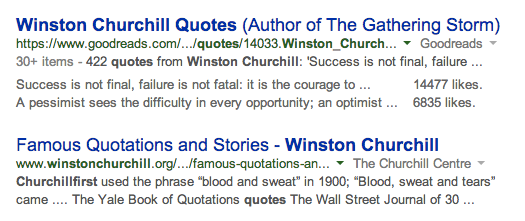
Tip 8: The Databank
 There’s many ways to stand out, just as there’s many ways to organize both the format and structure of your title tags.
There’s many ways to stand out, just as there’s many ways to organize both the format and structure of your title tags.
One way to add differentiation and a little bit more ‘clickable-ness’ to your search result is through the inclusion of dynamic data. This is the tricky tip that takes a little development and planning, but the results can dramatically improve click-through rates.
Adding numbers of found results, items sold, or people involved can add both an element that attracts, and serve as a reminder to search bots of page changes that can inspire recrawls and faster indexing.
Although dynamic titles are often worth the bother of programming time, it does depend on your business and potential customer needs, if intent can be influenced through demonstration of scope and scale, then dynamic titles pulled from search or site data might be ideal method to stand out and inspire clicks.

Tip 9: The Brand
 I’ve seen a fair amount of dissension in the SEO industry around “to brand or not to brand” your title tags. That highlights the fact that’s there is no definitive answer, and no proof of the inclusion of brand keywords in the title tag having any additional lift from an SEO standpoint.
I’ve seen a fair amount of dissension in the SEO industry around “to brand or not to brand” your title tags. That highlights the fact that’s there is no definitive answer, and no proof of the inclusion of brand keywords in the title tag having any additional lift from an SEO standpoint.
You should rank for your brand. Period. And if you don’t, there’s probably a lot more challenges ahead, including the possibility of a penalty, site availability, and any other number of SEO “deal-breakers”.
I generally recommend the brand being visible for the home page, with consideration for numbers 3 & 4 above, either in the first position, or right after the key differentiator keywords.
Remember that on brand searches – [navigational] where Google thinks the user is looking for your brand and nothing else – the search results is likely to reflect a truncated version of your homepage title tag anyway. Review the SERP and adapt accordingly.
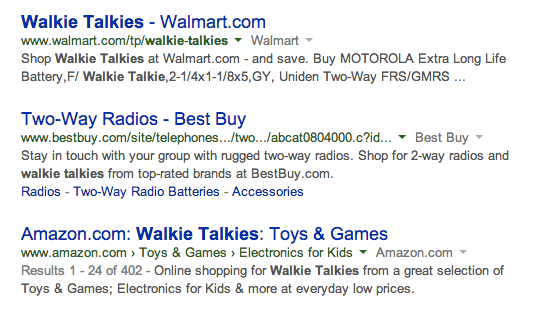
Tip 10: The Reality
 Google can show whatever they like, and will. Do a brand search and you’ll see a massively truncated result. This is based on user intent on navigational queries when Google thinks they know what you’re looking for.
Google can show whatever they like, and will. Do a brand search and you’ll see a massively truncated result. This is based on user intent on navigational queries when Google thinks they know what you’re looking for.
Following the best practices outlined above is designed to (hopefully) not give Google any reason to swap out your results, though we’ve certainly seen tests (and Matt Cutts confirmed above) that Google can – and will – show anything they believe is more relevant to the searcher, even if you believe your title tag is great, Google can always think otherwise.
Test.
Bonus Tip: The Power Tag
 In the 10 tips above I touch on the best or better practices for title tag formatting, SERP display, and click through, but the lowly title tag goes far beyond just these.
In the 10 tips above I touch on the best or better practices for title tag formatting, SERP display, and click through, but the lowly title tag goes far beyond just these.
Anchor rich internal linking has long been an ‘old hat’ SEO fallback, leveraging anchor text as keyword reinforcement to search engines (and occasionally users) of what they should find at the other end of a link. But onsite the title tag is a powerful tool that’s almost certainly used by search engines to assess page topics and the logical connections between them.
In a naturally, user-centric built website (one that offers the best experience for users), links between topically relevant pages should be related via like, similar, parent, child and/or logical themes and hierarchy, offering title tags (as an indicator of page topic) as a perfect vehicle to underscore and reinforce page, topic and hierarchy relevance and association.
What are your thoughts on the 11 tips above? Still think title tags are old hat?

 Google’s most recent results page layout changes meant more than just a search experience update. With the change came adjustments to how each individual result is displayed, which may almost certainly necessitate a refresh for a core search engine optimization (SEO) element: the venerable
Google’s most recent results page layout changes meant more than just a search experience update. With the change came adjustments to how each individual result is displayed, which may almost certainly necessitate a refresh for a core search engine optimization (SEO) element: the venerable 
 Much has been debated over the maximum length of a title tag. Review the mean recommendations of 10 different online resources and the average is around the 65-70 character mark.
Much has been debated over the maximum length of a title tag. Review the mean recommendations of 10 different online resources and the average is around the 65-70 character mark. So if there’s a maximum length, is there a minimum number of characters or character width? Although there’s always discussion on title maximum, the minimum length of the title tag is a challenge of a couple of factors:
So if there’s a maximum length, is there a minimum number of characters or character width? Although there’s always discussion on title maximum, the minimum length of the title tag is a challenge of a couple of factors:
 There’s nothing worse than missing an opportunity. The key in the search results is to start out strong, lead with your best foot, and connect with the search query to
There’s nothing worse than missing an opportunity. The key in the search results is to start out strong, lead with your best foot, and connect with the search query to  It’s not just bravado. Nothing draws the eye more than contrast.
It’s not just bravado. Nothing draws the eye more than contrast.
 Do a search for [homes for sale] and you’ll see results with title tags that don’t include an exact query match. Why?
Do a search for [homes for sale] and you’ll see results with title tags that don’t include an exact query match. Why?
 A title tag, when used as the clickable part of a search result, should not only be clickable, it should inspire clicks through some kind of call to action.
A title tag, when used as the clickable part of a search result, should not only be clickable, it should inspire clicks through some kind of call to action.
 You may not be top of page, but that doesn’t mean you can’t be top of mind! Don’t underestimate the ability of a title tag to help you stand out from the crowd.
You may not be top of page, but that doesn’t mean you can’t be top of mind! Don’t underestimate the ability of a title tag to help you stand out from the crowd.
 There’s many ways to stand out, just as there’s many ways to organize both the format and structure of your title tags.
There’s many ways to stand out, just as there’s many ways to organize both the format and structure of your title tags.
 I’ve seen a fair amount of dissension in the SEO industry around “to brand or not to brand” your title tags. That highlights the fact that’s there is no definitive answer, and no proof of the inclusion of brand keywords in the title tag having any additional lift from an SEO standpoint.
I’ve seen a fair amount of dissension in the SEO industry around “to brand or not to brand” your title tags. That highlights the fact that’s there is no definitive answer, and no proof of the inclusion of brand keywords in the title tag having any additional lift from an SEO standpoint.
 Google can show whatever they like, and will. Do a brand search and you’ll see a massively truncated result. This is based on user intent on navigational queries when Google thinks they know what you’re looking for.
Google can show whatever they like, and will. Do a brand search and you’ll see a massively truncated result. This is based on user intent on navigational queries when Google thinks they know what you’re looking for. In the 10 tips above I touch on the best or better practices for title tag formatting, SERP display, and click through, but the lowly title tag goes far beyond just these.
In the 10 tips above I touch on the best or better practices for title tag formatting, SERP display, and click through, but the lowly title tag goes far beyond just these.